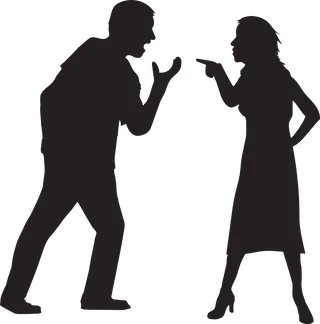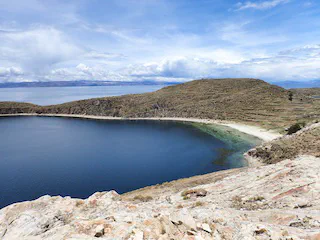
Lake Titicaca
- Matthieu P.J.
- Travel
- January 26, 2023
Note: this introductory article will give you context.
Table of Contents
Understanding Lake Titicaca
Lake Titicaca is shared between Peru and Bolivia, a fact that is not obvious at first. There are several islands of great spiritual importance on that lake. However, it seemed to me that the most prominent ones are the so-called Island of the Sun and Island of the Moon and they both are on the Bolivian side.
Although I was in Peru up to Cusco going south, it was impossible to carry on my trip due to political unrest and uncertainty in the southern province—that is, especially around lake Titicaca. The group I was with elected to abandon the prospect of seeing the lake entirely and went to northern Peru. I did not.
I arrived in La Paz on the eastern side of Bolivia after a long journey: 3 flights made of Cusco–Lima, Lima–Santa Cruz (Bolivia) and finally Santa Cruz–La Paz; followed by a 3 hours ride by bus. It was not exactly a cheap journey, but it was a journey that allowed me to reach this mystical lake, about which the Incas say in their legends that it was where civilisation started!
And what a rewarding sight it was to see the snow-capped mountains of the Andes looking east, as the sun was setting over the Island of the Sun (the largest island of Lake Titicaca).
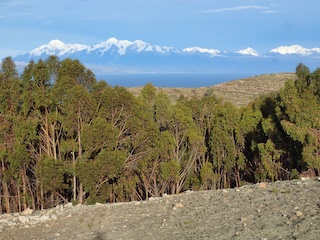
View over the Andes (Cordillera Real) from the Island of the Sun
The Andes are the longest continental mountain range in the world with 8,900 km (5,530 mi) long. Located the east side of lake Titicaca, they feature several peaks in the distance. A 5 hours hike across the island delivered fantastic sightseeing, with a view over a lake that is so large that it seems like a sea. The contrast of colour between the water, forest, sky and mountain is amazing. We are already at 4,000 meters of altitude and any physical effort is demanding compared to sea level. The tallest mountain nearby is called Ancohuma; it is about 2,500 m above us, but seen from see level it is 6,427 m which dwarves Mont Blanc (with its 4,809 m altitude in Europe). So is the specificity of this high plateau, the Andean altiplano— which lies mostly in Bolivia for that matter. It is only second in size to the plateau of Tibet… another highly spiritual place.
Copacabana
A convenient entry point into Lake Titicaca is the town of Copacabana. Does that name sound familiar to you? Sure, that is a famous beach in Rio de Janeiro but the original location is here on the shores of lake Titicaca. It’s actually a name the Spanish gave to the place because they couldn’t pronounce the local name kota kawana (in Aymara language) which means ‘view of the lake’. There, a chapel dedicated to the Virgin was built and the catholic worshipping grew in importance over the years. In Brazil, it happened that a statue/shrine was dedicated to the same virgin of Copacabana in Rio de Janeiro. And one day, the beach was renamed after her.
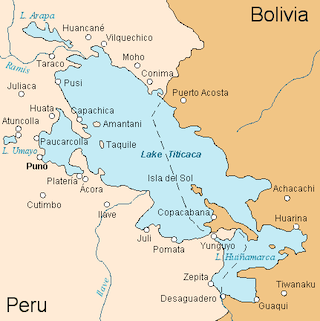
Map of Lake Titicaca (source: Wikipedia)
Duality is represented as follows: the Island of the Sun is the masculine energy (similar to many other traditions) while the Island of the Moon is the feminine energy. Both are required for creation to emerge.
From Copacabana, it is possible to reach easily the islands of the Sun and the Moon.
Island of the Moon
This island is the smaller of the two, and our exploration starts there with the feminine energy. It is said that only women were allowed on this island. Girls were elected to be placed there if they had certain marks on their skin. They would learn skills such as weaving during their teenage years and then return to their home villages with that knowledge around 17 years of age. It was considered a great honour to stay on this island. Well, it also seems that the king of the Incas used it as a training school and a pool for choosing his concubines (that version seems a bit less enlightened suddenly). It is said that some kings had hundreds of concubines…
The temple features some specific crosses used to mark the seasons. The entire complex is rather well preserved.
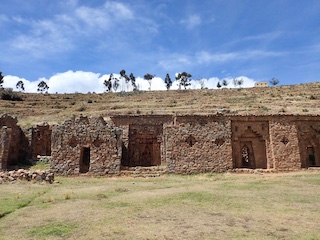
The Palace of the Virgins (or Iñak Uyu) on the Island of the Moon
There was a local legend that was told to me there. Once upon a time, men lived happily and in harmony with nature. The only things demanded of them was not to visit them mountaintop nearby. Which, of course, they did one day. Then, the angry gods punished mankind by sending hoards of pumas (titi in local language) to devour them to the last one. But Inti, the sun god, took pity of men and turned the pumas into stones using his magic. It is said that by that time only one couple was still alive. They were the first Incas, the man was named Manco Cápac and the woman Mama Ocllo. Seeing the puma turned into a grey coloured stone, Mama Ocllo shouted “titi caca” which means grey puma. And since that day, the lake has been known by that name.
The cross is a prominent pattern on the walls of the temple, and the number of angles used to draw the cross encodes numbers on the stone.
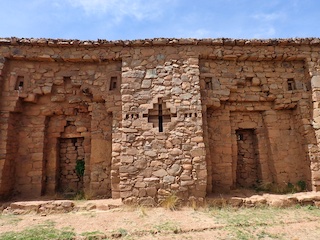
Detail of walls of the Palace of the Virgins
Island of the Sun
This island is larger and the central part mountainous. Hiking across the island was really nice, especially without any rain that day which was a gift during the rainy season of my trip.
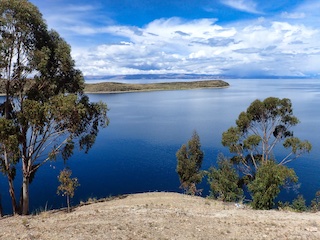
Lake Titicaca seen from the Island of the Sun
There are pigs scattered all across the island, something I did not expect; donkeys are also common. It is very rural and it seems that time has stopped and people live very connected to nature. Albeit by western standards we could also say they are very poor; indeed, Bolivia is the poorest country in South America.
As related by Graham Hancock in his 1995 book “Fingerprints of the Gods” , it is said that Viracocha came to the island of the Sun emerging out of water and that there, civilisation started all at once. Not a small feat! And whether we believe the legend or not, that is a testimony to the importance of that place. Lake Titicaca is credited to be the sacral chakra of mother Earth (or Pachamama as it is called in Peru). The water element of the sacral chakra is evidently present with the enormous water mass of this lake.
In the north part of the island, a table of sacrifice or mesa lays on a flat area and is still used today by local shamans for ceremonies.

Table of sacrifice on the north part of the Island of the Sun
Further north to the Island of the Sun, there are even smaller islands and some of them are used for ritual purposes. Sunken ruins of ancient Incan temples can be observed underwater edging the surface of the lake, alongside tunnels that go deep into the rock. Overall it is the mesmerising views of the lake around that sticks to the memory. What a special place!

